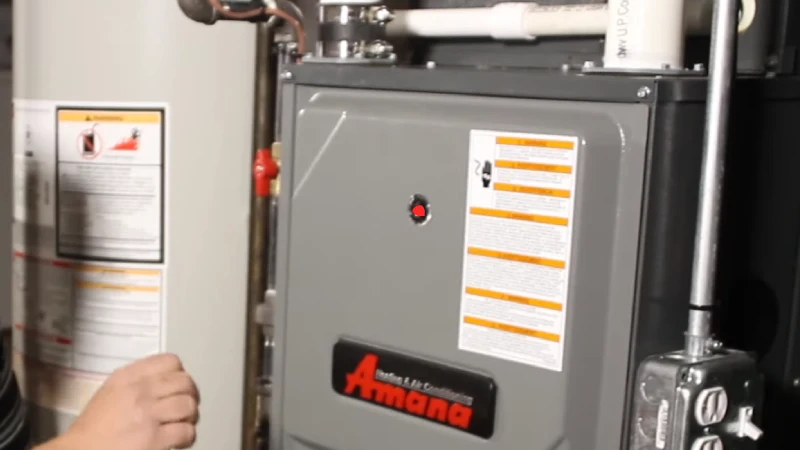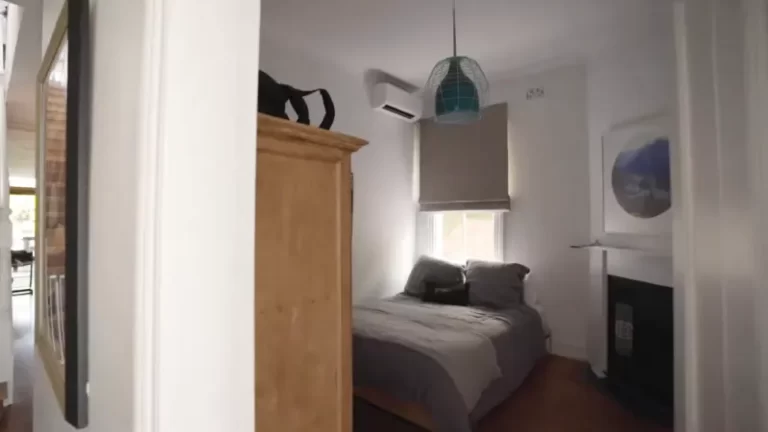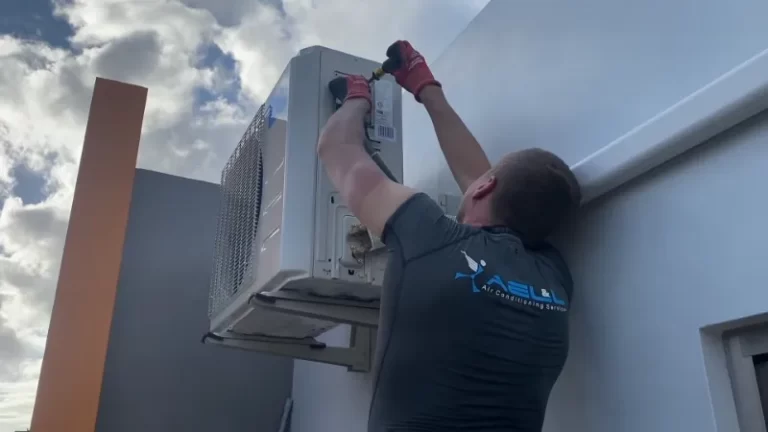Solid Red and Green Light on Furnace [Reasons and Solutions]

If you are seeing red and green lights on the furnace, this is not a reason for concern; however, if you are seeing a solid red/green light, this could be a reason for concern.
In this article, we’ll discuss the reasons behind the solid red and green light on your furnace and how to solve the issue.
You'll Learn About
Solid Red and Green Light on the Furnace
The solid red and green lights indicate an issue with the furnace’s ignition control module, which is the circuit board that controls the ignition of the furnace. It is possible that the circuit board has failed or that the heat exchanger has cracked, which can cause the circuit board to fail.
It is recommended to have a professional technician diagnose and repair the issue to ensure that it is fixed properly and safely. You may want to check if your furnace is still under warranty and if the repair is covered by the warranty.
If not, it is important to get estimates from multiple technicians before deciding on a course of action, as the cost to repair or replace the furnace can vary significantly. It is also recommended to replace the filter on your furnace as directed by the manufacturer, as a dirty filter can reduce the efficiency of the furnace and potentially cause issues.
Causes of Solid Red and Green Light
Failed Ignition Control Module (Circuit Board)
The ignition control module, also known as the circuit board, is a key component of the furnace that controls the ignition of the furnace. If the ignition control module fails, it can cause the solid red and green light to appear on the furnace. This could be due to a malfunction in the circuit board itself, or it could be caused by an issue with another part of the furnace, such as a cracked heat exchanger.
Cracked Heat Exchanger
The heat exchanger is a key component of the furnace that is responsible for transferring heat from the combustion process to the air that is circulated throughout the home. If the heat exchanger cracks, it can cause the circuit board to fail, resulting in the solid red and green light appearing on the furnace.
A cracked heat exchanger is a serious issue that can potentially be dangerous, as it can allow carbon monoxide, a poisonous gas, to leak into the home. It is important to have a professional technician diagnose and repair any issue with the heat exchanger as soon as possible.
Tools Needed
There are a few tools that may be needed when troubleshooting and repairing issues with a furnace. Some of these tools include:
- Multimeter: A multimeter is a handheld device that can measure electrical current, voltage, and resistance. It can be useful for testing various components of the furnace, such as the ignition control module (circuit board), to determine if they are functioning properly.
- Screwdrivers: Screwdrivers are needed for removing and replacing various components of the furnace, such as the ignition control module or the filters. Different sizes and types of screwdrivers may be needed, so it is a good idea to have a set of screwdrivers on hand.
- Wrench: A wrench may be needed to loosen or tighten various components of the furnace, such as connections to the gas line or the thermostat wires.
- Flashlight: A flashlight can be useful for illuminating hard-to-see areas of the furnace, such as the ignition control module or the heat exchanger.
It is important to have the appropriate tools on hand when working on a furnace to ensure that you are able to safely and effectively diagnose and repair any issues. It is also a good idea to consult the manufacturer’s manual or a professional technician for guidance on what tools may be needed and how to properly use them.
How to Troubleshoot Solid Red and Green Light?
Turn Power to Furnace Off and on Multiple Times
One possible troubleshooting step to try when you see the solid red and green light on your furnace is to turn the power to the furnace off and then back on again multiple times within a 30 second period. This can sometimes reset the furnace and resolve the issue.
If Red Light Remains Lit, It May Indicate Failed Circuit Board
If the red light remains lit after attempting the above troubleshooting step, it may indicate that the ignition control module (circuit board) has failed. This can be caused by a malfunction in the circuit board itself or by an issue with another part of the furnace, such as a cracked heat exchanger.
Consult Manufacturer’s Manual
If the above troubleshooting steps do not resolve the issue, it is recommended to consult the manufacturer’s manual for further guidance or to call a professional technician for a diagnosis. A technician will be able to properly diagnose the issue and determine the best course of action for repair.
It is important to have any issue with your furnace properly diagnosed and repaired to ensure the safe and efficient operation of the furnace.
How to Repair Solid Red and Green Light on Furnace?
Warranty
If your furnace is still under warranty, it is important to check if the repair is covered by the warranty. Some warranties may cover both parts and labor, while others may only cover certain parts or components. If the repair is covered by the warranty, it may be a good option to have the repair completed by a professional technician.
Getting Estimates From Multiple Technicians to Compare Costs
If your furnace is not under warranty, it is important to consider your options for repair. One option is to get estimates from multiple technicians to compare the costs of the repair. This can help you determine the best value for your money.
Consider Replacing Furnace
If the repair costs are high or if your furnace is old and inefficient, it may be a good option to consider replacing the furnace. A new furnace may be more energy efficient and could potentially save you money on energy costs in the long run. It is important to consider the age and efficiency of your furnace when deciding on a course of action for repair or replacement.
Tips When Dealing With Furneces
Here are a few additional tips for troubleshooting and repairing issues with a furnace:
- Make sure the furnace is turned off before attempting any repairs: It is important to ensure that the power to the furnace is turned off before attempting any repairs. This will help prevent any accidental electrocution or injury.
- Wear protective gear: When working on a furnace, it is a good idea to wear protective gear, such as gloves and goggles, to protect yourself from any potential hazards.
- Follow the manufacturer’s instructions: The manufacturer’s manual for your furnace will likely have detailed instructions on how to troubleshoot and repair various issues. It is important to follow these instructions carefully to ensure that you are properly diagnosing and repairing the issue.
- Use caution when working with gas: If your furnace runs on natural gas, it is important to use caution when working with gas lines and connections. If you are unsure of how to safely work with gas, it is best to call a professional technician for assistance.
- Test the furnace after repairs are completed: Once any repairs are completed, it is a good idea to test the furnace to ensure that it is functioning properly. Follow the manufacturer’s instructions for starting the furnace and carefully monitor it for any issues. If you notice any issues, it may be necessary to call a professional technician for further assistance.
Safety Concerns
There are a few additional things that may be worth discussing when it comes to troubleshooting and repairing issues with a furnace:
Regular Maintenance
It is important to keep your furnace in good working order by performing regular maintenance. This may include tasks such as cleaning and replacing filters, checking and tightening connections, and testing the safety controls. By performing regular maintenance, you can help prevent issues from arising and keep your furnace running efficiently.
Signs of a Faulty Furnace
There are a few signs that may indicate that your furnace is not functioning properly. These can include strange noises, poor heating performance, or an increase in energy bills. If you notice any of these signs, it is a good idea to have a professional technician diagnose and repair the issue.
Carbon Monoxide Safety
If your furnace is not functioning properly, it is possible that it may be releasing carbon monoxide, a poisonous gas. It is important to have a carbon monoxide detector in your home and to regularly test it to ensure that it is working properly. If you suspect that your furnace is releasing carbon monoxide, it is important to evacuate the home immediately and call a professional technician for assistance.
Choosing a Professional Technician
When it comes to repairing a furnace, it is important to choose a professional technician that you can trust. Look for technicians with good reviews and a solid track record of experience. It is also a good idea to get estimates from multiple technicians to compare costs and ensure that you are getting a fair price for the repair.
Final Words
In conclusion, the solid red and green light on a furnace is not a good sign and requires attention. It is important to troubleshoot and repair the issue to ensure the safe and efficient operation of the furnace. It is also important to keep the furnace in good working order by following the manufacturer’s recommendations for maintenance and replacing the filters as needed.
By taking care of your furnace and addressing any issues that arise, you can ensure that your furnace is functioning properly and providing reliable heat to your home.



